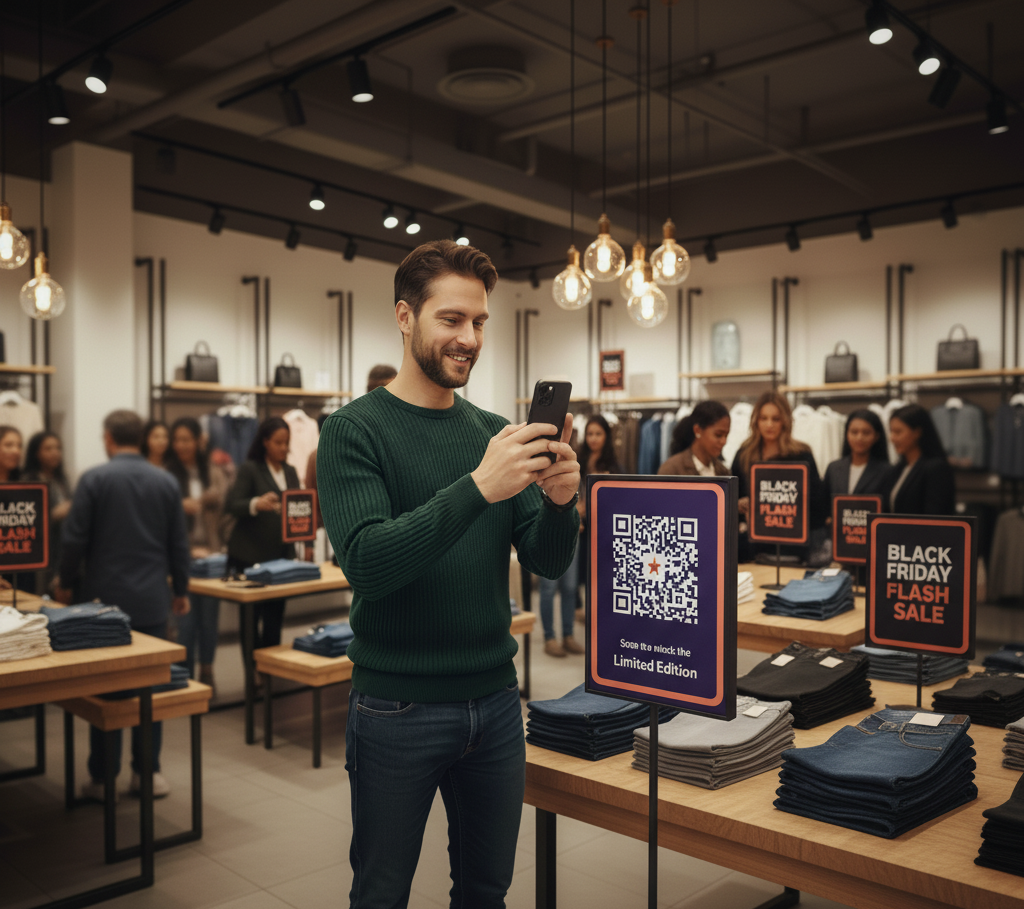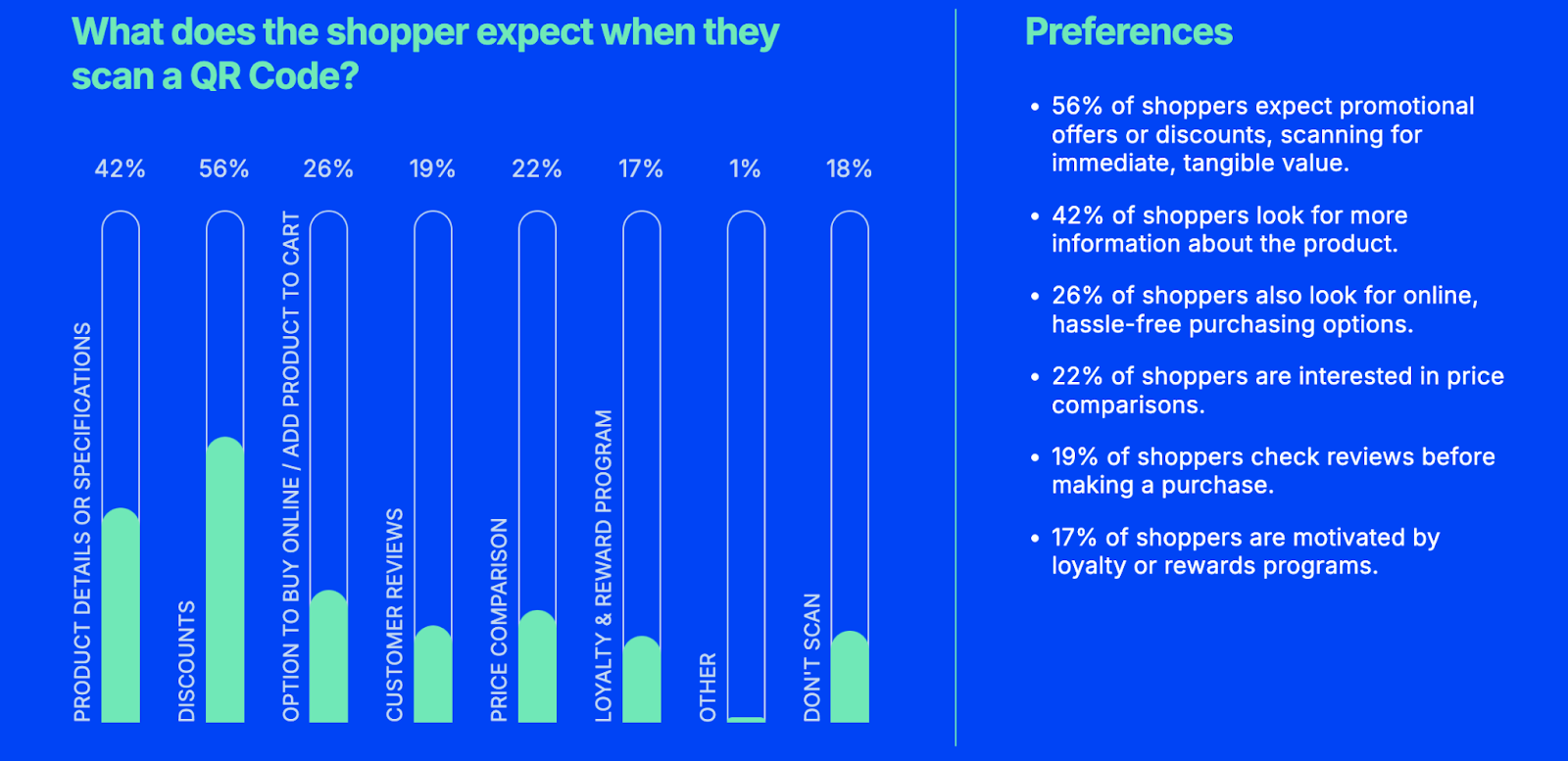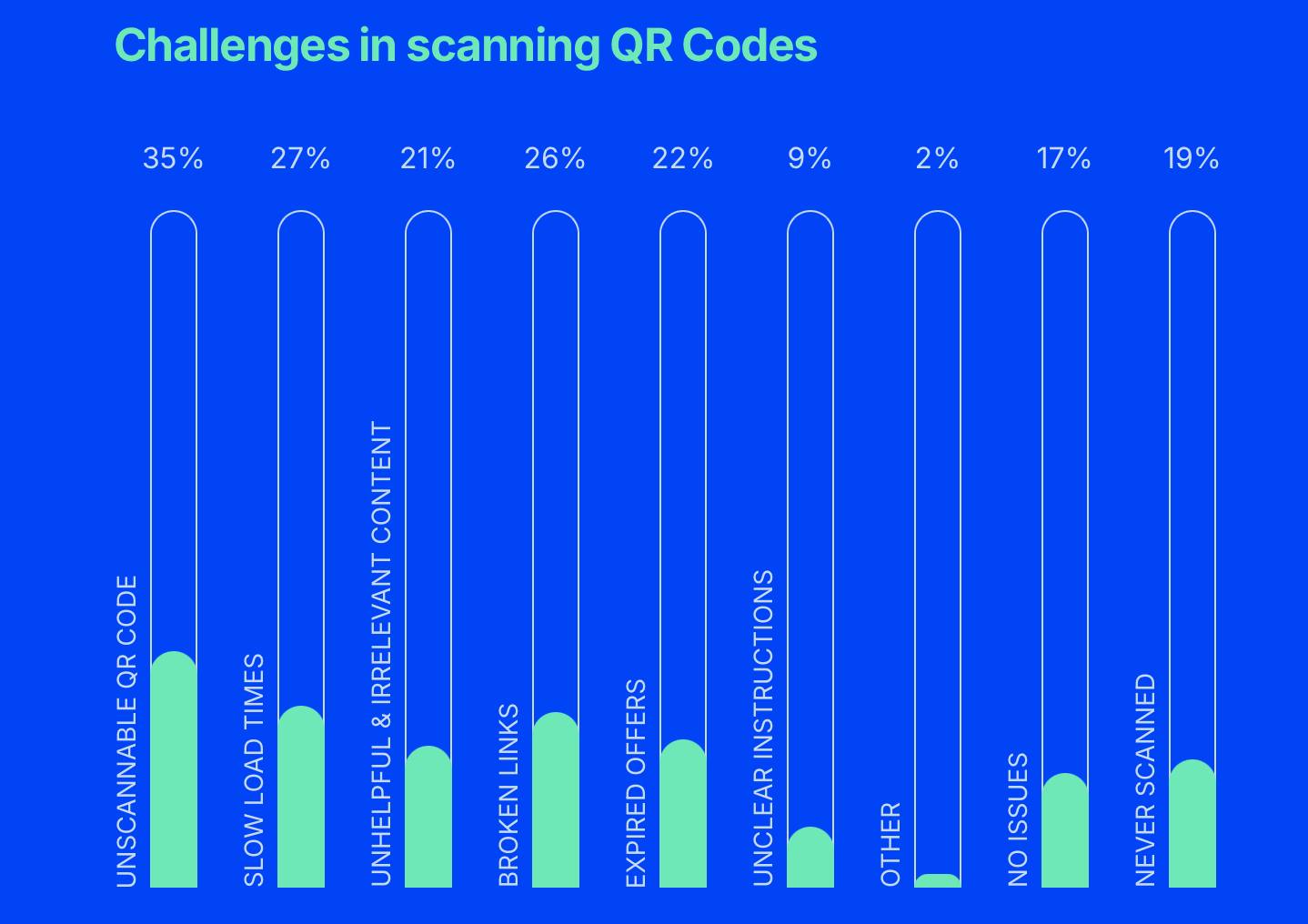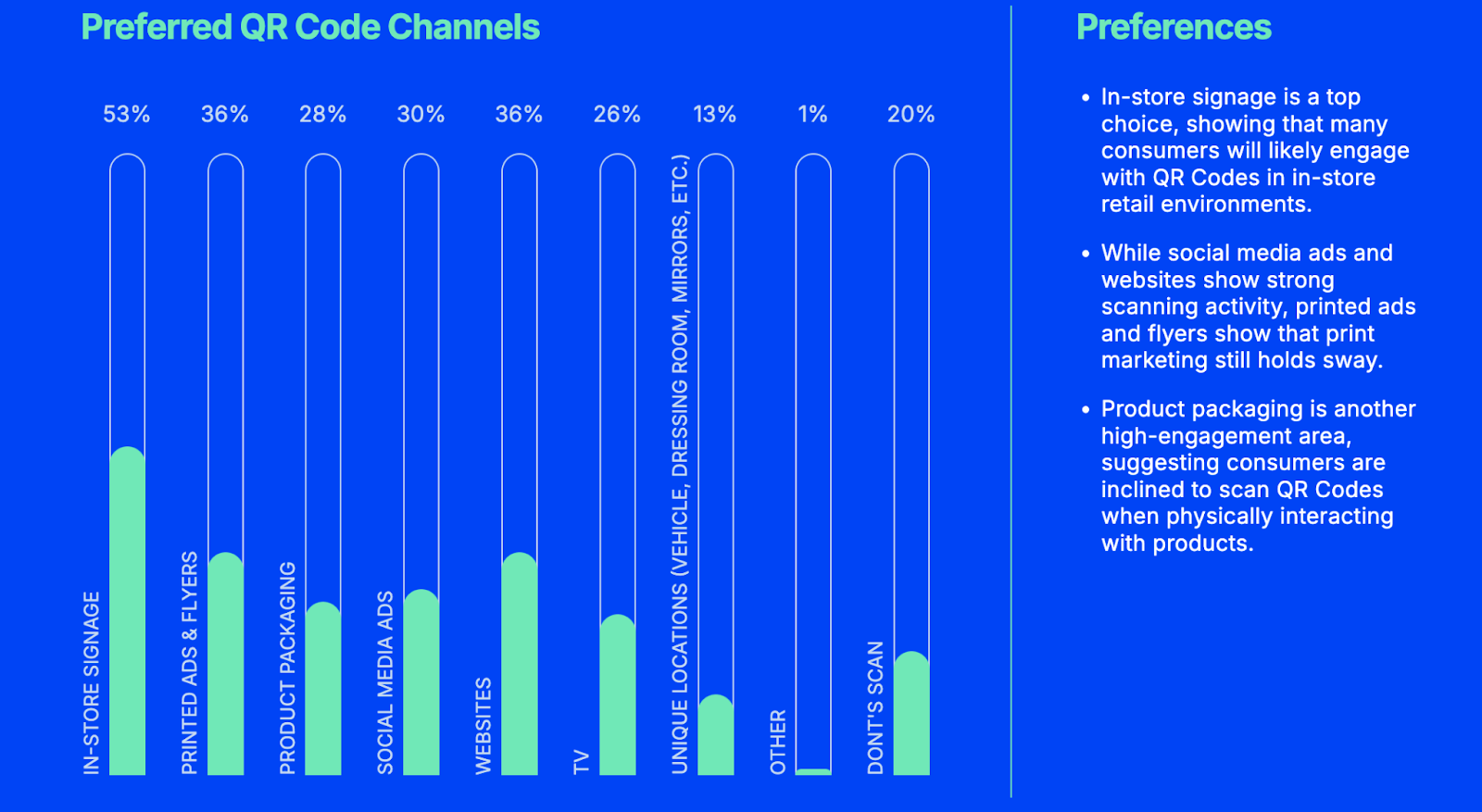The QR Code Strategy for BFCM Conversions

Every November, retailers flood channels with bigger banners, bolder discounts, and heavier ad spend. The strategy draws crowds, but conversions? That's where most campaigns stall.
If you’ve ever watched a Black Friday Cyber Monday (BFCM) traffic spike while your sales stay flat, you know the frustration: record scans, clicks, and visits that never turn into purchases. To fix that disconnect, it helps to first understand what drives shoppers to scan during BFCM, what captures attention and what turns interest into intent.
The gap isn't in your offers. It's in the delivery. QR Codes give you a direct line from offline interest to online action, but only if what's behind the code matches what shoppers actually expect when they scan. And according to the BFCM QR Code Marketing Report, most campaigns miss that mark.
The marketers who win BFCM aren't just discounting harder. They're delivering three conversion levers at the exact moment of intent: smart bundles, limited-edition drops, and genuine personalization.
The question is how to activate those levers when shoppers are ready to act. This article shows you why QR Codes are built for that moment.
The big 3: Bundles, limited editions, personalization
When mapping out BFCM campaigns this year, you should know that price cuts alone rarely carry the conversion. Shoppers will show up for a discount, but they buy when the experience feels smart, special, and personal.
Campaigns that stand out use the following levers:
- Bundles bring products together in a way that makes sense and saves effort for the shopper. A holiday skincare set or a laptop with matching accessories shows clear value and encourages bigger carts without feeling like a random markdown.
- Limited editions create urgency and excitement. A seasonal flavor, a limited-run design, or a one-time collaboration turns an ordinary purchase into something worth grabbing and sharing before it’s gone.
- Personalization makes every offer feel tailor-made. Loyalty rewards for regulars, clear comparisons for first-time buyers, or early access for big spenders show that you understand what matters to each customer and that relevance keeps them coming back.
These three levers work when delivered at the exact moment of shopper interest. That's where QR Codes bridge the gap, turning bundles, limited editions, and personalized offers into instant, high-intent actions.
The QR Code opportunity most teams miss
Marketers are leaving QR Code potential on the table during BFCM campaigns.
Our report shows that most teams put their weight behind social media and email, while QR Codes on ads rank only sixth in BFCM promotional channel usage.
That puts QR Code adoption well behind other channels, even though they’re built for fast, direct action at the exact moment a shopper is ready to buy.
When shoppers scan, they aren’t just curious but ready to act. In fact, 56% expect a discount or promotion, and 26% want an easier way to buy. This tells you exactly what to deliver: instant value and zero friction between scan and sale.

However, there’s a delivery gap that’s hurting conversions. Many QR Code campaigns lack end-to-end planning, and the moment of intent is often lost in poor execution.
Smart marketers make QR Codes work alongside what shoppers actually want: the three levers from earlier. Here's how to connect them:
- Bundles: Instead of just linking to a product page, a QR Code can open a cart pre-filled with the full set and the promotion applied. Dynamic QR Codes let you change the URL destination if stock shifts mid-weekend, so the bundle always matches what’s promised.
- Limited editions: Use QR Codes to make scarcity tangible. A scan can reveal a live inventory count, a timed release window, or an interactive waitlist that locks in interest even if the item sells out. That transforms limited drops from “one-time offer” to an experience shoppers can track and share.
- Personalization: QR Code analytics lets you tailor the next screen to who’s scanning. You can route scans based on geography, device type, or time of day, serving local store pickup options, language-specific offers, or timed price tiers without needing multiple codes. This flexibility means every shopper feels the offer fits their moment, not just their past purchases.
Across all three, the key is to treat the scan as part of the offer, not as an afterthought.
Post-scan challenges that cost conversions
Even the best BFCM offers can fail at the moment that matters most, right after a shopper scans your code.
35% of shoppers encountered codes that wouldn’t scan, 27% ran into slow-loading pages, 26% landed on broken links, and 22% found that the promotion had already expired.

Each of these issues kills momentum in a different way:
- An unreadable code ends the journey before it starts.
- A slow page drains the impulse to buy.
- A broken link strands a shopper mid-process.
- An expired offer creates frustration that lingers long after the sale.
These failures cost immediate sales and weaken the trust that fuels repeat purchases, as shoppers always remember when a brand wastes their time. Closing the gap between what’s promised and delivered is what will set you apart.
How to close the QR Code experience gap for better conversion
For a smooth QR Code experience from the first glance to the final scan, focus on these four execution moves:
1. Test and audit every placement
Check your QR Codes under real conditions, such as different lighting, angles, phone models, and network speeds. Field testing catches issues like unscannable codes or slow loads that derail a sale before it starts.
2. Design landing pages for clarity and traffic
Every QR Code should immediately tell shoppers what lies behind it. If it leads to a special bundle, a new collection, or a page with extra product details, spell it out right next to the code. Also, expect sudden surges and build pages that can handle them. Use lightweight layouts, compressed media, and scalable hosting so heavy traffic never turns into delays that drain buying impulse.
3. Plan an omnichannel rollout
Meet shoppers where they actually engage. The report shows 53% of shoppers prefer QR Codes on in-store signage, followed by 36% on printed ads and flyers. While using these high-traffic channels, mix it up with digital touchpoints such as social posts or emails to make scanning natural in every setting. Also, mapping these channels to how different regions and audiences shop ensures your best offers don’t stay hidden.

4. Set up live performance monitoring
Revenue isn't the only metric to measure. Track QR Code scans, bounce rates, and cart completions in real time. Shoppers using QR Codes care about speed, ease, and relevance. Iterate on those elements to deliver an uninterrupted experience.
BFCM conversions need more than coupons
Big discounts may bring shoppers in, but closing sales takes more than that. What wins BFCM is the mix of smart bundles, true exclusivity, personalized experiences, and QR Code journeys that are crystal clear from start to finish.
Every seamless scan and well-timed offer strengthens trust and sets the stage for repeat business long after the holiday rush. Brands that align these elements with what shoppers actually expect turn fleeting traffic into lasting customers. To go a step further, learn how to turn BFCM shoppers into brand advocates through shareable QR Code-driven experiences. The next step is to turn one-time buyers into loyal customers by extending QR Code-driven engagement beyond BFCM.
Ready to dive deeper? Check out Uniqode's BFCM QR Code Marketing Report for the complete data on shopper expectations, scanning behaviors, and what converts during the busiest shopping weekend of the year.
